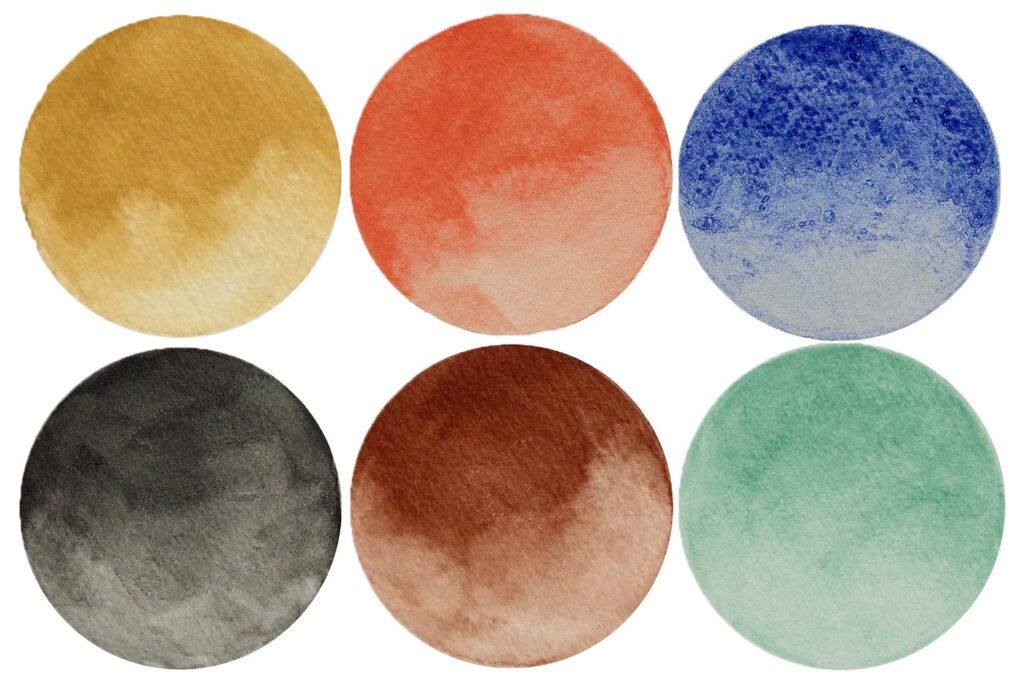
As we researched the historical pigments used in early Japanese painting and print, we realised that it was an exciting opportunity, as watercolour makers, to explore and reintroduce some heritage colours into our watercolour world.
It led us on a journey of discovery, into colours less familiar to us. The colours of traditional Japanese prints and paintings captured our imagination. It is the effortless balance of soft, dark tones with the contrasting pops of vivid bold colours that we wanted to encapsulate within this palette of our hand mulled watercolour.
Here you will read some stories behind the historical pigments found within our Japanese Collection palette. The insights we learnt about each of the pigments and what the watercolour artist can expect when using this palette of colours.
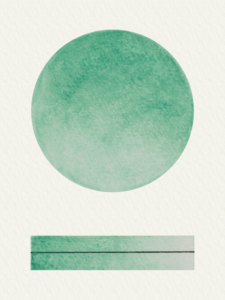
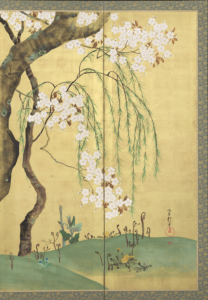
Cherry Maple Trees (detail from a screen).
Sakaai Hoitsu.
Early 1820s.
The historical pigment of the mineral Malachite is the oldest known green pigment. Its roots in history go back to the ancient Egyptian tombs.
We were excited to mull this pigment, however it proved to be problematic. Even with pre-washing the dry pigment, a yellow residue of impurities would often occur in the artwork. So we explored a man-made, mineral alternative.
Turning to L.Cornelissen & Son early colour pigments, we tried their synthetic Malachite pigment. It is an artificial mineral pigment, copper carbonate, which is chemically based on Malachite.
We find it produces a more consistent colour, delivered an increased tinting strength to the original mineral and is transparent. In terms of colour, it still gives us that beautiful ethereal green we love so much and can be found in Japanese art.
You’ll find Malachite adds naturalising textures to the work as it gently granulates.
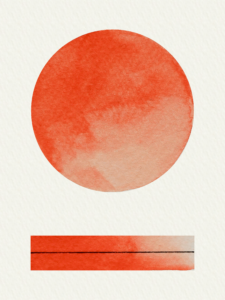
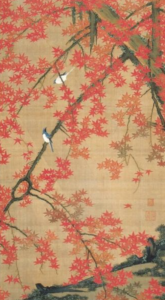
Seki Sanjuro
Woodcut
By Utagawa Toyokuni
c. 1810
Traditionally the Japanese artisans would have got their reds from a pigment known as Vermilion. However, the genuine historical pigment of vermilion contains a sinister amount of mercury sulphide. We therefore explored alternatives.
Luckily there are plenty of good imitation vermilion pigments out there. While experimenting with them, we discovered that a ‘hue’, when applied to a colour name, indicates a modern pigment has been used instead of a traditional one.
We settled for a vermilion hue with red-orange characteristics. It is semi-transparent with good tinting qualities so you’ll find it mixes well with other colours.
Historically, artists have used this bold fiery red with strong visual impact.
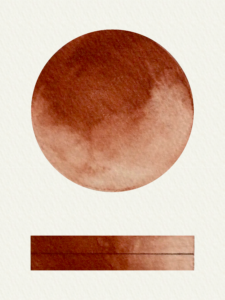
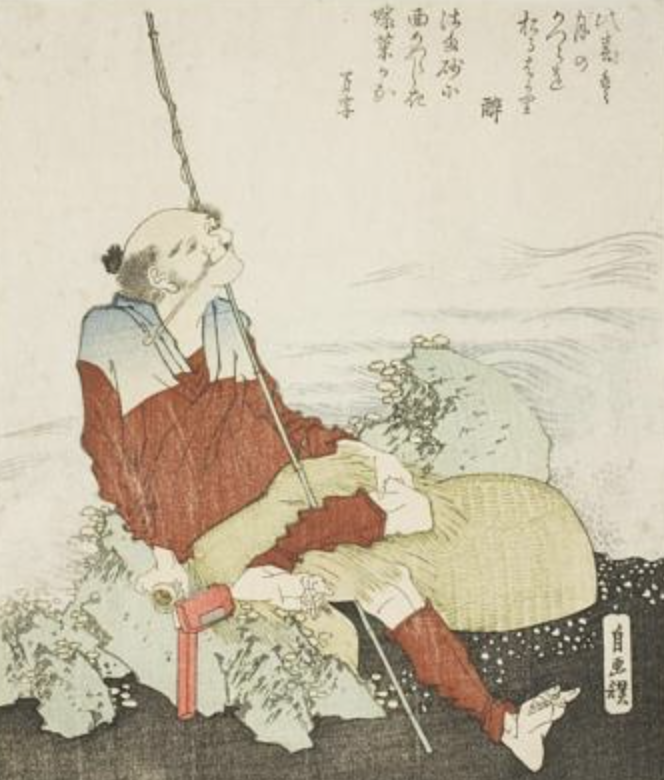
Self portrait as a Fisherman
By Katsushika Hokusai
1603-1867
The ancient Greeks called this iron ore mineral “bloodstone” which describes beautifully the blood red colour of the powdered pigment. But just as blood changes from bright red to brown as it oxidises with air, so too does the pigment as we turn it to paint.
Haematite is from deep in the earth and delivers a rich reddish brown with strong earthy values. A wash of Haematite brings lighter brick reds and pink tones.
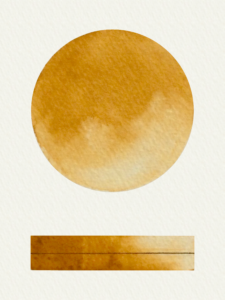
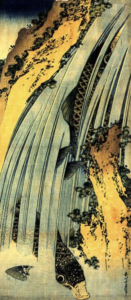
Two Carpe ina Cascade
K. Hokusai
1760-1849
Yellows in Japanese art tend to veer towards the earthy tones. We chose Yellow Iron Oxide because it brings warm brights and deep mustards to the palette.
It mixes and tints well and we especially love the peachy colour it gives to Haematite when mixed together.
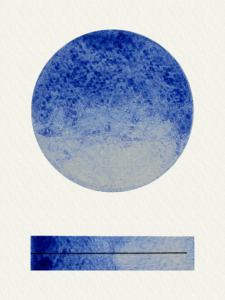
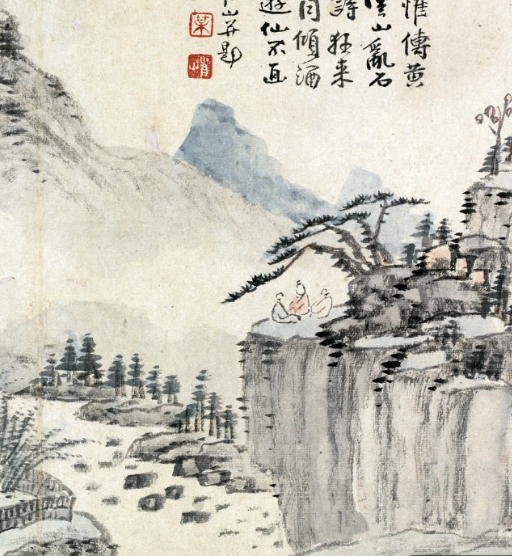
Smalt Blue is mostly found in Japanese folk paintings. Its low tinting and transparent qualities capture the vanishing points of sea and sky.
As traditional makers of watercolour paint, smalt is like no other pigment to mull or paint with. We have learnt that the cobalt infused glass the pigment is made, can fade if over worked on the mulling slab. As a watercolour paint, Smalts grainy texture can be felt by the painter through their tools.
It has high granulation. On rough paper the pigment settles into the craters of the surface speaking of watery and moon like textures.
This historical pigment is renowned for its light sensitivity and can fade over time.
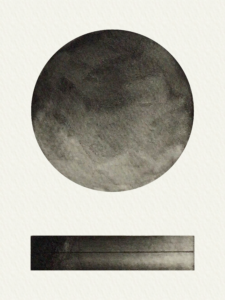
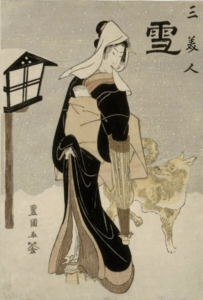
Three Beauties: Snow
Woodcut.
By Utagawa Toyokuni
c. 1810
This pigment came to us quite late in the collection. A little apprehensive to include a black in the palette, we had overlooked the importance that black plays in Japanese art.
You only have to think of the iconic tradition of Japanese calligraphy. Known as Shodo, artists often scribed poems and stories as an integrated part of the print or painting. Think also of the black hair or sash and how it dramatically punctuates the soft colours of a geishas kimono.
Vine Back is made from charred vines. Seen in prehistoric cave art, it is the oldest historical pigment in this collection. Vine Black is warm with red undertones and gives the artist some beautiful tonal gradients.
A note to the artist: These colours are intended to be used, mixed, explored and enjoyed in whatever way you, the artist, feels appropriate for your practice. In other words these are not exclusively for the Japanese style of painting.